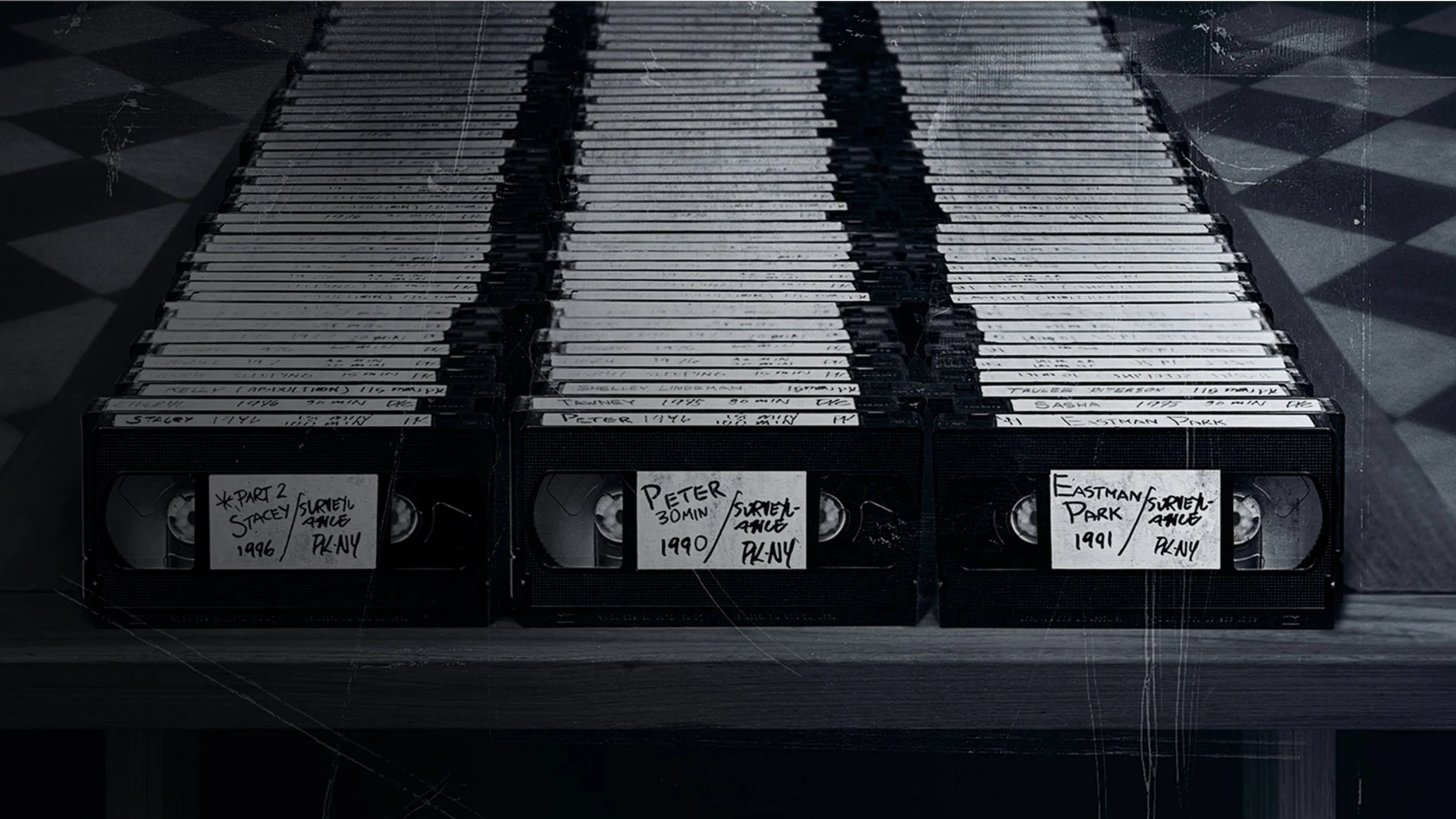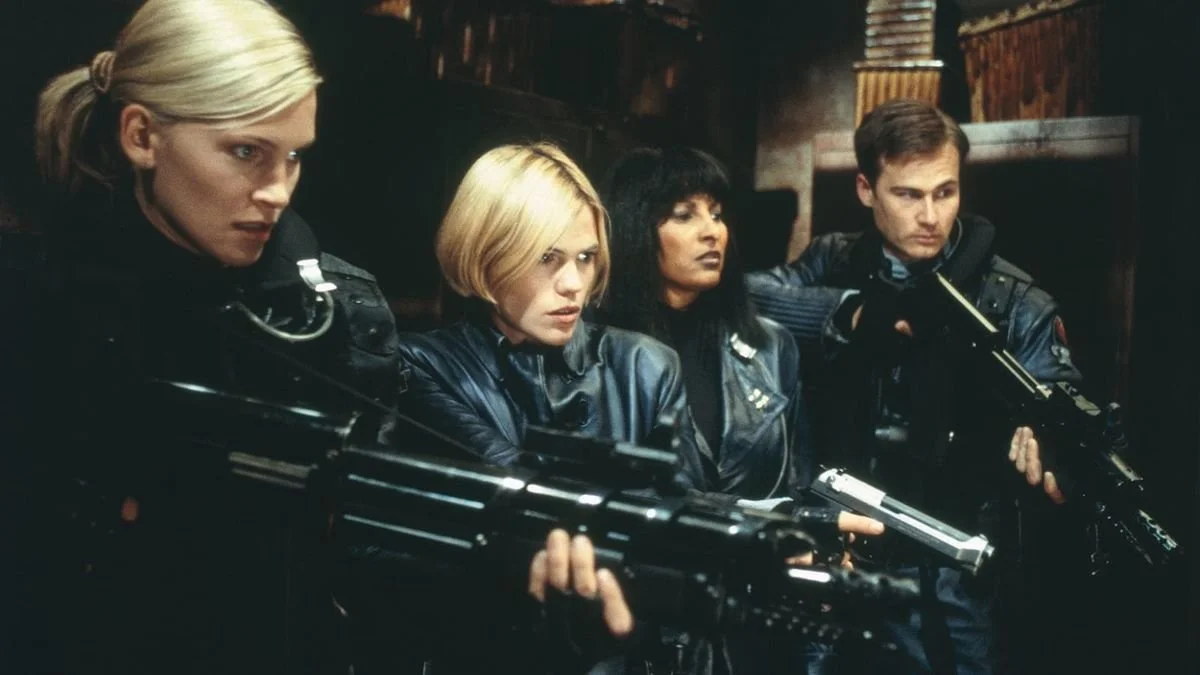Review: Teenage Mutant Ninja Turtles (1990)
Like many children of the 1980s and early 90s, I had Ninja Turtles action figures. I remember losing Michelangelo’s nunchuks down the crack of an elevator shaft on vacation and being devastated. I remember trying to superglue a forearm back onto Anders’ Leonardo figure. I remember all those episodes of the cartoon with Krang’s Technodrome stuck at the Earth’s core. All this is to say, I’m not unbiased. I have fond memories of growing up with the Teenage Mutant Ninja Turtles franchise, and especially of this, the original movie, which we watched repeatedly on VHS as boys. But I also recall somewhat downgrading the movie as a young adult, perhaps as part of that typical phase of distancing oneself from childish things. Yet in spite of any misgivings, it was a blast to revisit the original Teenage Mutant Ninja Turtles movie with my five-year-olds! In fact, I couldn’t help but notice and admire the sturdy craftsmanship of the film.
First, let’s talk about the run time. Teenage Mutant Ninja Turtles is the kind of tight movie in which, during replay, each scene is never quite as long as you remember, but at the same time the tightness only enhances the appeal. Clocking in at a crisp hour and a half, Teenage Mutant Ninja Turtles boasts a precision of storytelling and coherence of scene structuring that is lacking in too many children’s and family movies today. The narrative may be built on familiar character arcs and rising action interspersed with lulls—such as Raphael’s need to learn self-control, or the retreat to the farm after defeat and before the big climax—but it allows a small kid to easily follow along. My children only asked questions about intended mysteries—or the weird ghost of Splinter coming out of the campfire.
The plot also has more substance than I remembered. As in many superhero movies, in Teenage Mutant Ninja Turtles a crime wave plagues New York City, but the crime ridden city is portrayed in a way that is miles apart from the extravagant Gothic darkness of Gotham City in Tim Burton’s Batman, which was released the year prior. Teenage Mutant Ninja Turtles begins with April O’Neil (Judith Hoag), a TV reporter, framing the social concerns of the city during her newscast; this opening scene grounds the film’s admittedly goofy proceedings, involving wise-cracking martial artists in big green turtle costumes, with a strange sense of reality. Moreover, while the urban crime depicted was a serious concern in the late 1980s and early 1990s, it also speaks to the current resurgence of violent crime in American cities in 2022. Additionally, the opening newscast also economically frames the problem the heroes will try to solve, while also tantalizing the audience with the mystery of the Foot Clan.
When April is attacked while walking to her van after work one night, the Ninja Turtles rescue her. After another attack, Raphael brings her back to their hideout in the sewers, and she becomes the first human the Turtles reveal themselves to. As the film proceeds, we learn more about the villainous master of the Foot Clan, Shredder (James Saito), who turns out to be an old nemesis of the Turtle’s sensei, Master Splinter (Kevin Clash), from the old days in Japan. Mysterious, with a menacing costume, deep voice, and limited dialogue, as well as hints of a past history with the Wise Old Man (or Wise Old Rat, in this case), Shredder is clearly an imitation of Darth Vader, but he works.
Shredder’s Foot Clan camp for lost boys is very much in the vein of Pleasure Island in Pinocchio (1940), a place for a boy to indulge his rampant adolescent desires away from dad. (As evidenced in 1991’s Hook, the ultimate expression of this licence in the early 90s seems to be having a big skate park stretched throughout your base). But while in Pinocchio, Pleasure Island turns you into a jackass, the fun and games and conditioning in Ninja Turtles turns you into a criminal footsoldier, and, perhaps eventually, a full member of the community, a Foot Clan ninja.
Similar to the film’s portrayal of urban crime, the viewer’s retrospective position only deepens the gravity of the scenes set in the Foot Clan recruitment camp. I couldn’t help but note how well the movie, albeit in simplified fashion, outlines the process of radicalization. Find unhappy adolescents (mostly boys), emphasize and encourage their isolation from society and previous social bonds, give them what they think they want as a carrot building trust and loyalty, and show them the promise of attaining more and reward that publicly. All this results in Shredder making a veritable factory for martial artist foot soldiers/terrorists/career criminals. The process is illustrated through the film’s interest in Danny (Michael Turney), the son of April’s boss at the news station (Jay Patterson), who is a boy feeling alienated from his solo dad who falls into the Foot Clan’s grooming camp.
It is also remarkable, in spite of what some contemporary critics had complained, and in spite of the thick rubber costumes, that each Ninja Turtle has such a fleshed-out personality. The turtle costumes, made by Jim Henson’s Creature Shop, really hold up well, and are enhanced by the solid puppetry, physical acting, and voice work. Corey Feldman is notable as Donatello, but I also like Brian Tochi as Leonardo, Josh Pais as Raphael (who, if anyone, is the main character), and Robbie Rist as Michaelangelo. I love their wise-cracking. Some of it is very dated, not in a lame way but more as a time capsule of a lost era. At the same time, with Michaelangelo’s impressions of Cagney as well as Rocky, the Turtles and their non-stop commentary reflect a wider range of 20th century pop culture than just the 1980s.
There’s also a great supporting cast. Judith Hoag’s April O’Neil is charismatic and attractive, but not in a fake sexpot kind of way. She also doesn’t have to be a kick-ass-girl fighter to have agency, strength, and guts. I love the character of Casey Jones, the former ice hockey player turned vigilante, who uses an assortment of sports equipment as weapons. The best part is that Jones is played by one of Canada’s great actors, Elias Koteas.
The last thing I’ll note, which I only picked up this time round, is that this is very much a Honk Kong movie in the vein of Jackie Chan and wuxia epics, in spite of the narrative focus on Japanese culture. The movie was produced by the major Hong Kong film company, Golden Harvest, and it replicates the typical Hong Kong mixture of goofy slapstick, martial arts fighting, and earnest melodrama, along with their loose and playful camerawork and editing. Thus, we can view Teenage Mutant Ninja Turtles as not only an example of American fascination with Japan in the 1980s, but also as part of the second, post-1970s kung fu wave, which continued to mainstream East Asian martial arts as sport for youth in the West as well as introduce Western audiences to Hong Kong-style martial arts movies.
In our current cinematic world of two-and-a-half hour superhero bludgeonings and crass, hyper animated films, we need more of these kinds of tightly narrated, well-structured, seriously-made yet loose and fun movies for families. The stakes aren’t saving the world, just stopping a bad guy. There are feelings and relationships without an emphasis on “Big Feelings” and “Big Themes.” Teenage Mutant Ninja Turtles is light and fun, with nice touches in the casting and with relevant social commentary. And, for all you children of the 80s and 90s, this is one childhood flick you don’t need to pretend is good, because it is.
8 out of 10
Teenage Mutant Ninja Turtles (1990, USA and Hong Kong)
Directed by Steve Barron; screenplay by Todd W. Langen and Bobby Herbeck, based on the comics by Kevin Eastman and Peter Laird; starring Judith Hoag, Elias Koteas, Brian Tochi, Josh Pais, Corey Feldman, Robbie Rist, Kevin Clash, James Saito, Michael Turney, and Jay Patterson.



Kiyoshi Kurosawa’s 2001 J-horror film predicted the new millennium in terrifying ways.